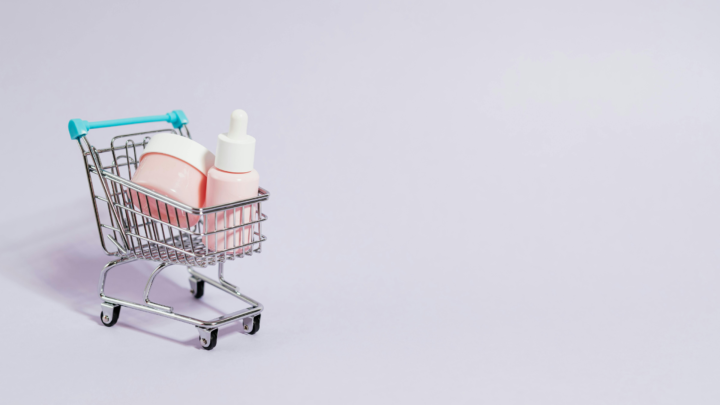An important part of planning your business and marketing strategy is understanding the buyer journey, as well as knowing your audience and creating your tone of voice. It can help to give you content ideas for your brand, identify marketing opportunities and predict the behaviour of your target audience a little bit better.
Let’s take a closer look at the buyer journey, why it’s importand and how to map it out for your beauty business.
What is the buyer journey, and why’s it important?
The buyer journey, also known as the customer journey, is the series of steps or stages that a potential customer goes through when considering, evaluating, and ultimately making a purchase decision. It’s the entire process from the initial awareness of a need or desire to the post-purchase experience and beyond. Mapping out the buyer journey involves understanding these stages and the key touchpoints and interactions that occur along the way.
By mapping out the buyer journey, beauty brands can gain insights into the behaviour, preferences, and motivations of their target audience. This understanding allows brands to tailor their marketing strategies and messages to better resonate with consumers at each stage of the journey.
Beauty consumers have diverse needs, preferences, and concerns when it comes to skincare, makeup, and other beauty products. Mapping out the buyer journey enables brands to segment their audience and deliver personalised marketing messages and experiences that address specific needs and interests.
The buyer journey for beauty consumers often involves multiple touchpoints across various channels, including social media, websites, retail stores and more. By mapping out the journey, brands can identify these touchpoints and optimise them to provide a seamless and engaging experience for consumers, ultimately driving conversion and loyalty.
Mapping out the buyer journey can provide valuable insights into consumer preferences and pain points throughout the purchasing process. This information can be used to inform product development decisions, ensuring that beauty brands create products that meet the needs and expectations of their target audience.
Building strong relationships with beauty consumers requires understanding their journey beyond the point of purchase. By mapping out the post-purchase experience and nurturing customers through ongoing engagement and support, brands can foster loyalty and advocacy, turning satisfied customers into loyal brand advocates.
Understanding the beauty buyer journey
Mapping out the buyer’s journey involves understanding the stages a potential customer goes through when making a purchasing decision and tailoring your marketing and sales efforts to meet their needs at each stage. Here’s a step-by-step guide to mapping out the buyer’s journey so that you can understand what your potential customers are doing and why:
- Identify Stages of the Buyer’s Journey
- Awareness Stage: This is the stage where the buyer realises they have a problem or need. They are seeking information and solutions but may not be aware of your brand or product yet.
- Consideration Stage: At this stage, the buyer has defined their problem or need and is actively researching and evaluating different solutions. They are comparing options and considering whether your product or service is the right fit.
- Decision Stage: In the decision stage, the buyer is ready to make a purchase decision. They may be comparing specific products or vendors and weighing factors such as price, features, and customer reviews.
- Understand Buyer Personas
- Develop detailed buyer personas representing your ideal customers at each stage of the journey. Consider factors such as demographics, motivations, pain points, goals, and preferred communication channels for each persona.
- Identify Touchpoints
- Map out the various touchpoints or interactions a buyer may have with your brand throughout their journey. This could include social media, website visits, email interactions, customer reviews and more.
- Consider both digital and offline touchpoints, as well as owned, earned and paid channels where your audience engages.
- Create Content for Each Stage
- Develop content tailored to the needs and interests of buyers at each stage of the journey.
- For the awareness stage, create educational content that addresses common questions and pain points related to your industry or niche.
- In the consideration stage, provide informative content that highlights the benefits and features of your product or service and positions it as a solution to the buyer’s problem.
- In the decision stage, offer persuasive content such as case studies, testimonials or product demonstrations to help the buyer make their final decision.
- Align Content with Buyer Personas and Channels
- Ensure that the content you create resonates with the specific needs and preferences of each buyer persona.
- Distribute content through the appropriate channels where your target audience is most likely to engage. This could include social media platforms, email marketing, blog posts, webinars and more.
- Track and Analyse Buyer Behaviour
- Use analytics tools to track how buyers interact with your content and move through the different stages of the journey.
- Analyse data such as website traffic, email open rates, click-through rates and conversion rates to gain insights into what’s working well and where there may be opportunities for improvement.
- Optimise and Iterate
- Continuously optimise your marketing efforts based on insights from buyer behaviour and performance metrics.
- Iterate on your content and strategies to better meet the needs of your audience and drive more conversions at each stage of the buyer’s journey.
By mapping out the buyer’s journey and tailoring your marketing efforts accordingly, you can better engage with potential customers, guide them through the decision-making process, and ultimately drive more sales and conversions for your business.
Mapping out the beauty buyer journey
Not sure where to start when it comes to mapping out the buyer journey for your beauty business? Let’s go into a bit more detail about the different stages of the beauty buyer journey, what these stages mean for you as a founder or marketer and how to embed your content strategy in there.
Mapping out the beauty buyer journey involves understanding the unique stages that individuals go through when considering and purchasing beauty products. Here’s how you can map out the buyer journey specifically for the beauty industry:
- Awareness Stage:
- At this stage, potential buyers become aware of their beauty needs or desires. This could be triggered by various factors such as changes in their appearance, exposure to beauty trends, or recommendations from friends or influencers.
- Content Strategy: Create educational content that addresses common beauty concerns, trends, and solutions. This could include blog posts, social media content and videos that provide tips, tutorials and product recommendations.
- Consideration Stage
- In the consideration stage, buyers actively research and evaluate different beauty products and brands to address their specific needs or desires. They may compare features, read reviews, and seek advice from experts or peers.
- Content Strategy: Provide detailed product information, reviews, and comparisons to help buyers make informed decisions. Consider creating content that showcases the benefits and unique selling points of your products, as well as user-generated content such as testimonials and before-and-after photos.
- Decision Stage
- In the decision stage, buyers are ready to make a purchase decision. They may weigh factors such as price, quality, brand reputation, and availability before making their final choice.
- Content Strategy: Offer incentives such as discounts, promotions, or limited-time offers to encourage buyers to take action. Provide clear calls-to-action (CTAs) and make the purchasing process as seamless as possible, whether it’s through your website, retail stores or online marketplaces.
- Post-Purchase Stage
- The buyer journey doesn’t end after a purchase is made. In the post-purchase stage, it’s important to engage with customers and ensure their satisfaction with the product.
- Content Strategy: Follow up with customers to thank them for their purchase and gather feedback on their experience. Encourage them to share their thoughts and experiences with your products on social media or review platforms. Offer ongoing support and resources to help them get the most out of their purchase, such as usage tips, tutorials and product recommendations.
- Retention and Advocacy
- Building long-term relationships with customers is essential for brand loyalty and advocacy. Continuously engage with existing customers to keep them coming back for more and turn them into brand advocates who promote your products to others.
- Content Strategy: Offer loyalty programs, exclusive discounts, and rewards to incentivize repeat purchases and referrals. Share user-generated content and testimonials to showcase the positive experiences of your customers and build trust with new buyers.
By mapping out the beauty buyer journey and aligning your marketing efforts with each stage, you can guide potential customers through the decision-making process and drive conversions and loyalty for your beauty brand.
Need help with your content strategy or creating content for your beauty brand? Get in touch to find out how working an expert beauty content marketer can support your business goals.

